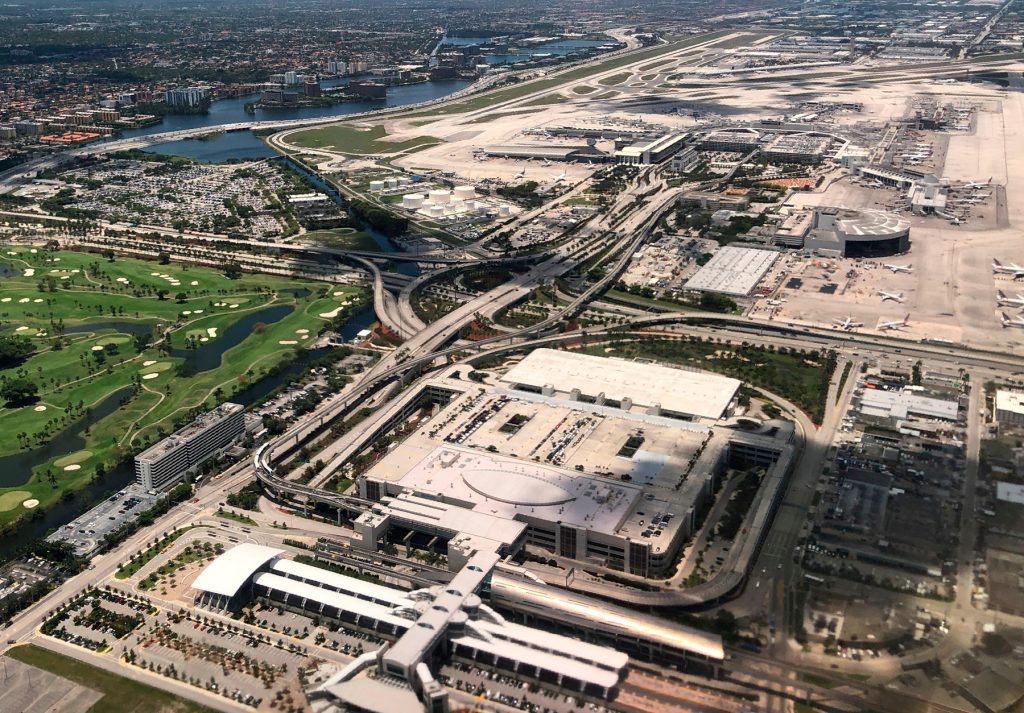Language
You can read the magazine in one of the following languages
For many people, airports are gateways to the skies and faraway lands. What may not be so obvious in the rush to check in and board is that airports of all sizes, from international to smaller regional, are also major employment hubs and important economic powerhouses.
In Miami-Dade County, the number one economic engine is the Miami International Airport (MIA). Up to 275,000 local jobs are directly and indirectly supported by MIA; in excess of 36,000 people work at the airport on a daily basis. Since its foundation in 1928, MIA has grown to become the second busiest airport in the United States for international passengers. For its size, MIA generates a whopping US$31.9 billion business revenue per year.
We’ve taken aggressive measures to help our passengers and staff feel safe and confident about using the airport.
In 2019, 46 million passengers – up by a million over 2018 – passed through MIA’s halls and terminals, a level of traffic that prompted the airport’s management to expand its capacity with a US$5 billion Capital Improvement Program to increase capacity, improve cargo operations and provide two new hotels.
“The program will pave the way for future passenger and cargo growth, projected pre-pandemic to reach 77 million travelers and more than four million tons of freight by 2040,” explains MIA Director and CEO Ralph Cutié.
But then 2020 arrived, and with it came the COVID-19 pandemic. Air travel around the world ground to a halt as social distancing and lockdowns caused travel plans to be jettisoned. The road back was unclear, but Ralph says the safety and security of passengers and employees remained a top priority, with the airport’s customer experience a close second.
“We’ve taken aggressive measures to help our passengers and staff feel safe and confident about using the airport,” he shares. “And because of our health and safety initiatives and more, MIA was the first airport in Florida and the second in the United States to be accredited by Airports Council International Airport Health Accreditation program, and we were just reaccredited by that program in September 2021.”
A leader “by example”, Ralph stepped into his current role that same month. “I have a quote from Dwight D Eisenhower in my office that says, ‘You don’t lead by hitting people over the head. That’s assault, not leadership. Leadership isn’t about just pushing your own ideas, but a conversation that demands mutual respect,’” he says. “My leadership philosophy is to treat people how you would like to be treated.”
Treat people with respect and compassion, and everything else will take care of itself.
Ralph’s attention to detail when it comes to the passenger experience is such that nothing is left to chance. “If a passenger steps off their flight and the loading bridge is in bad shape, their first impression of the airport is a bad one,” he points out. “We can’t let that happen.”
Every element of the journey, from bathrooms to baggage claim, has been – or will be – upgraded to enhance the customer experience and Ralph says that’s what CIP is all about. “It’s going to be moving forward with either modernizing existing facilities or building out new facilities so we can have more gates and serve additional passengers.”
Creating extra capacity that may never have seen use was a risk, especially in the tight economic times experienced around the world during COVID-19’s first wave. But what quickly became apparent during those uncertain months was that cargo was an unshakeable component of the airport’s business.
Sitting as it does atop the US airport ladder for international freight (and third for combined freight and mail), MIA’s laurels are big enough to rest on. Nevertheless, the airport management took the opportunity during COVID-19 to increase cargo capacity and introduce contactless technology throughout operations.

“MIA has enough runway capacity for current growth projections, but we had to optimize the terminal and cargo areas to help the airlines achieve more flight movements,” Ralph says.
The entry of four new airlines – Southwest, JetBlue, Emirates and Spirit Airlines – to MIA within the past year is the culmination of nearly 15 years of recruitment efforts by the airport. “It’s my belief that our persistence, ongoing analyses and growth of specific markets, airport costs and MIA’s ability to keep costs under control, all came together toward their ultimate and respective decisions to choose MIA,” he explains.
Whether it’s passengers or airlines being catered to, facilities management is Ralph’s biggest priority for a very important reason. “In my eight years at MIA, most complaints have revolved around the airport facilities,” he says. “I tell people that you can have the most beautiful facilities, but if you have a bad experience at any one touchpoint, your impression of the airport – and by extension, Miami-Dade County – will be negative.”
In other words, a stay in Miami can be tainted by a negative experience at your first port of call. “We’re trying to get that addressed so that when someone leaves here after a positive experience, we’ll get their return business, which is what we’re looking for.”
For Ralph, it’s all an extension of his personal philosophy. “Treat people with respect and compassion, and everything else will take care of itself.”
